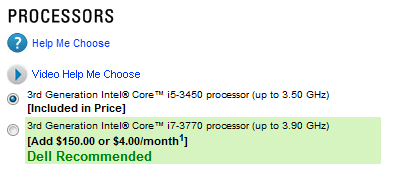Have you ever heard from someone that they don’t like Starbucks coffee but they like the experience at the store so they go in, sit down and buy the coffee? It is quite a testament to the world’s largest coffee chain that they are able to lure in customers who don’t like their premium-priced primary product but are instead attracted to their comfortable seating areas and atmosphere replete with cushy couches and free WiFi.
The point here is people buy things for subtle reasons they may not consciously realize. But how you may ask does this translate into tech and cars?
Recently Rob Enderle , President and Principal Analyst, Enderle Group wrote about the patent lawsuit between Apple and Samsung and related the pace of automotive innovation and competition to what is happening in the mobile space.
And he got me thinking about the similarities as well and moreover how the segmentation in one space can potentially be translated into the other.
Brand/Image: For many, Mercedes and BMW are the only cars they will purchase because they are considered top brands but are also priced reasonably enough when compared to a some even higher-end product lines like Bentley or Maserati. Both German manufacturers have done an incredible job in automotive design and performance and to some degree safety. BMW’s “Ultimate Driving Machine” moniker generally tells you the car is more performance oriented while Mercedes is more slanted towards luxury. Audi is similar to Mercedes in its brand positioning.
Of course Apple comes to mind when looking at the top brand in the consumer electronics world. Microsoft has become a strong brand for the older generation – perhaps most like Cadillac. It should be noted this isn’t a great place to be. Nokia may be closest to Chevy or GMC in that its brand was widespread and oftentimes a strong player in the less expensive areas of the market.
Performance is an important part of the automotive market and most car brands have their halo car. Chevy has the Corvette which has helped breathe excitement in the brand and Dodge has the Viper. Nissan has their GT-R and Lexus has their $375,000 LFA made of carbon fiber. BMW has an entire line of performance cars while Mercedes has their AMG brand and Audi has their S and RS cars which boost horsepower and other performance attributes over their less boosted counterparts. For example the A6 generates 211 horsepower while the S6 which looks quite similar on the outside generates 414 hp.
The PC market has followed the automotive space with processor speed and type being akin to engine size, torque and horsepower ratings. For example, a Dell XPS 8500 is promoted on the company’s website as costing $749.99 and for that price you get an Intel Core i5-3450 which is rated at up to 3.5 GHz. For an additional $150 you can upgrade to an i7-3770 processor which has speeds up to 3.9 GHz and is “Dell Recommended” whatever that means.

The tablet space is led by Apple which likes to keep things simple so speed hasn’t been as much of an issue. Over time and iterations of mobile products, Apple has increased its processor speeds and even gone from single to dual-core and quad-core processors but they don’t focus externally on the hardware to a great extent.
The one exception and where the company generates gobs and gobs of money is memory. Apple will charge you a $200 premium for 48 GB of memory while you can buy a SanDisk Cruzer 64 GB USB Flash Drive for $34.99. Then again, it is far simpler to understand memory size than it is to comprehend the difference between an Intel i5-3450 and i7-3770 processor.
Apple has simplified the tablet and smartphone purchase to the point where spec differentiation is tough to pull off beyond memory size and number of cores. This is likely one of the reasons Samsung and others have had to focus on increased phone screen sizes to differentiate themselves from the iPhone.
Safety is an important area for some in the automobile market and most people think Volvo when they think of cars which survive crashes best. Have you noticed however that Volvo hasn’t set the world on fire with its sales? The analogous area in mobility is likely security and guess how many people were concerned about moving from very secure RIM devices to less secure iOS and Android devices? Hint: not too many.
Environmental concern is an area where Toyota has shone this past decade with its Prius. The crossover with tech is the “greenness” of the companies themselves. Recently in fact Apple had to change its stance on the EPEAT environmental standard listing as a result of consumer backlash. It was a rare misstep for the consumer electric brand with a virtual halo around it.
Utility is another reason people purchase their vehicles. How many minivan owners do you know who overlook the chunkiness of their vehicle’s design because of the convenience and/or cost? SUVs are cooler looking and so are crossovers – at least to most eyes but they usually require a lot more cash.
The tech space is similar in that you can spend almost nothing for a clunky, ugly and slow laptop or netbook but a state-of-the-art ultrabook could cost you two times as much or even more! An HP 2000-410US Notebook PC will run you $409.99 while an HP ENVY Spectre XT Ultrabook 13t-2000 will set you back about a grand.
Price/Economy is another area of differentiation for car companies. By economy I am referring to fuel by the way and the point here is the low-end of the market buys their vehicles on a tight fuel/monthly payment budget. They can’t necessarily afford to buy a hybrid car so they settle for a low-cost car which doesn’t weigh so much and which has a smaller engine to conserve on fuel.
The analogous area in tech is the 7” tablet where prices are lower than the iPad. RIM popularized the smaller-sized tablet but their prices were similar to or higher than Apple when they first launched. It took Amazon to come out with the $199 Kindle Fire to shake up the tablet space and attract the lower-end of the market. Apple countered with a $299 iPad 2 which was a brilliant move.
Still, this is the area where many tablet makers will be forced to compete – at least that it unless Apple releases its rumored tablet of similar size.
The mobility space for its part has its own areas of differentiation.
Enterprise sanctioning was perhaps the most important area which has become fairly unimportant. One of the strengths of the Cisco Cius table for example was its centralized app control. The market responded with crickets – not because CIOs didn’t want to exert control over apps downloaded on corporate devices but because users could care less what devices their enterprise sanctions.
Ecosystem is another area which doesn’t exist in the automotive space – at least not in a major way. The idea here is there can be only a handful of big ecosystem players and so far we have Apple, Google/Android and Microsoft as our major players… Even RIM has to run Android apps on its OS to even play in the mobile space.
Another area of differentiation for the mobile and automotive spaces is the automobile market can have many more models because of the wide variety of prices in an auto manufacturer’s complete line up of vehicles. Volkswagen for example sells its cheapest car the Jetta starting at $16,675 while its more expensive cousin the Audi R8 GT Spyder starts at $210,300 and its most expensive corporate cousin the Bugatti Veyron 16.4 Super Sport starts at $2,426,904 or the equivalent of 145.5 Jettas!
But device manufacturers should be cognizant of the parallels between these markets because at the end of the day, consumers are consumers and can be motivated to purchase products for reasons we didn’t foresee ahead of time. Who would have predicted before the iPhone was invented for example, that consumers would prefer a sleek phone made of glass to one which was made out of military grade plastic?






